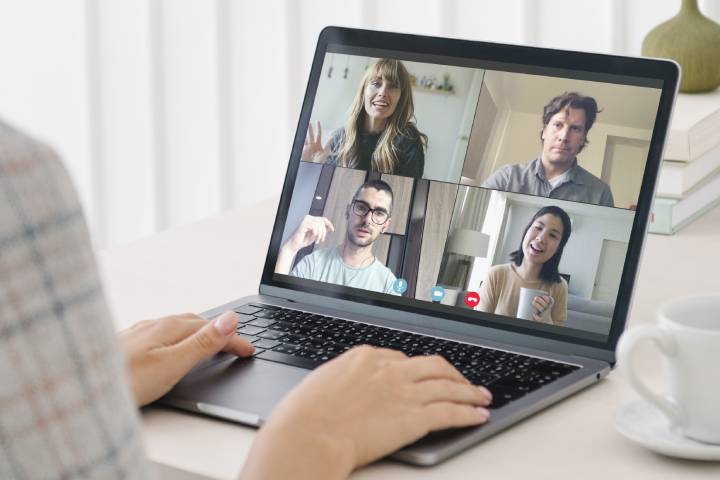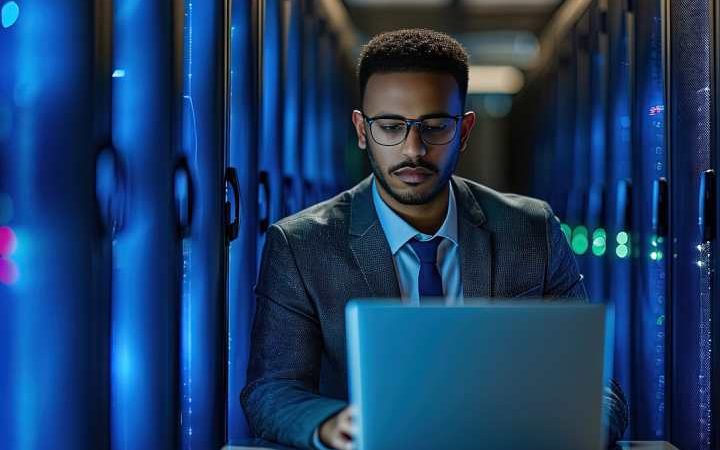What You Need to Know About Video Conferencing?

Video conferencing is a way for people to communicate in real-time using video and audio transmissions. Video conferencing systems send live video from one point to another by using the internet, making them much more convenient than typical conference calls that require dialling in.
In addition, video conferencing allows users to see body language and facial expressions, providing a much richer communication experience.
Table of Contents
What is Video Conferencing?
Video conferencing allows communicating via video and audio transmissions between two or more parties at different geographical locations instead of communicating solely through text-based messages.
A typical example would be a business teleconference where remote participants can interact as if they were all in the same room, rather than resorting to e-mails or conference calls. Video conference systems are also used in distance learning and collaboration and for entertainment purposes such as online gaming and entertainment chat rooms.
The Basic Components of a Video Conferencing System
A video conferencing system must transmit and receive data from remote locations. A typical system consists of:
- A stable connection can be attained via broadband or fibre internet connection, although a fibre connection will provide faster transmission speeds and a more stable connection between two locations. It is also essential that participants have access to reliable power supplies as electrical outages can occur during video conferences, resulting in dropped connections and poor audio quality.
- The monitor should be at least 17″ for optimal viewing experience and high resolution (a minimum of 1280 x 1024 pixels). In addition, participants need to have visibility from their monitor screens without being distracted by their surroundings. Therefore, it is best to either close the door or ask others not to interrupt while a video conference is in progress. The room where participants are conducting a video conference should also be properly lit with no bright lights behind participants that would create shadows on their faces from the camera’s perspective. Conversely, if there are too many windows and the sun shines brightly into the room, this could cause an unpleasant glare for all parties involved.
- The conference phone must have high-quality speakers and microphones to hear each other even when speaking from different locations. In addition, speakerphones can help overcome echoes and background noise problems during a conference call. However, these issues may arise again depending on the type of conference phone used.
- Other peripherals are video cameras, webcams, microphones, headsets, speakers, etc. These allow people to communicate more effectively. Participants can communicate by exchanging written messages during a video conference if the earlier equipment is unavailable. However, this method does not allow participants to see or hear each other in real-time and may cause delays, leading to misunderstandings between parties.
- Free online video conferencing software allows for file sharing between different locations and interacting using whiteboards and instant messaging services. These programs also provide users with an indication of how much bandwidth they have at their disposal based on the quality of service (QoS), which can help improve the quality of a video conferencing session.
QoS allows users to control their video conferencing systems and ensure that they can transmit data without disruptions or issues arising due to bandwidth constraints.
Types of Video Conferencing
There are two types of video conferencing: point-to-point, which is used for one-on-one communications, and multipoint, where more than one party participates in a single conference call.
The latter is often used for business meetings involving multiple parties from different locations. In addition, businesses often use both types of communication during their meetings as specific issues may involve one or more participants at a given time, depending on the complexity level of the matter at hand.
How Does Video Conferencing Work?
Before any video conferencing can occur, all parties must connect across different networks (e.g., Intranet, Internet). The following steps describe how data is transferred between two users within a video conferencing session:
Data compression (coding)
Data compression occurs on both sides of the connection. Heavy-bandwidth media files such as high-definition videos are compressed into smaller chunks before being transmitted over the network(s).
This enables faster and more reliable transmission speeds during a video conference and storage for participants who wish to record or archive their participation. Lossless compression is generally used for video conferencing, while lossy compression (decoding) is often employed for audio.
Data transfer and compression (decoding)
The compressed data packets are transferred from one participant to another via the network(s). Each packet contains information about the sender, the receiver, start times, end times, etc. The decoder parses each packet to extract its contents before displaying them on-screen or playing them through speakers.
Once all of the packets have been received by both users, they can see and hear each other in real-time, allowing them to communicate directly with each other promptly.
Key Features of Video Conferencing Software
Screen sharing: Screen sharing is a common feature of video conferencing software and allows users to see what is on another participant’s desktop in real-time. This can be beneficial if one or more participants have trouble explaining or demonstrating something while others need to view it while speaking.
It may also be helpful when teaching students who will often benefit from seeing their instructor demonstrate how to complete a task step-by-step. The instructor can show them how it should be done and allow them to follow along with minimal distractions (e.g., not needing to look at their computer screen).
Simultaneous annotation: Simultaneous annotation is another feature found on most video conferencing software. It has the added benefit of providing all users with a more engaging experience. They are free to take notes on their computer using an annotation tool throughout the conference(s).
Each participant will have access to the same set of information displayed on-screen, which allows them to focus on what is being taught or discussed rather than write down every word spoken during meetings.
Chatbox: A chat box is exceptionally beneficial if multiple people are taking part in a video conference as it allows them to communicate directly with each other in real-time. In the case of large conferences, this is especially useful because it enables participants to ask questions or clarify information without interrupting anyone who may be speaking at that moment.
A chat box also allows users feedback on what was said to engage more thoroughly during a conference session by providing more thoughtful responses and asking follow-up questions if necessary effectively.
File sharing: File sharing allows all parties to easily upload any documents used throughout a conference(s) onto their computer screens. Then, if necessary, they can be saved to a cloud-based storage system for future reference.
This enables participants to work together on any projects regardless of where they are located geographically. It also ensures that all team members have access to the same information, allowing everyone to make informed decisions during the meeting(s).
Video call recording: The option of recording video calls is another useful feature found within most software applications because it ensures users have access to all recordings indefinitely. Furthermore, this means that anyone who missed an important conference or had another reason they couldn’t participate in conversations can still access the information afterward.
This is especially useful for managers responsible for overseeing employees within their department, as it allows them to ensure everyone is completing tasks correctly and promptly.
Noise cancellation: Noise cancellation is another common feature found on most video conferencing software applications. It enables participants to communicate more effectively during conferences/meetings without background noise interfering with conversation flow.
It also helps eliminate echo feedback which can occur when multiple speakers are talking simultaneously. Although this may seem at first, this technology filters out any unwanted or unnecessary noise that can otherwise create distractions for all users, which helps them focus more on the information discussed.
Device switching: Finally, one of the most helpful features found within video conferencing software is an option to switch between different devices such as webcams, smartphones, and tablets. This allows participants to communicate with each other even if they only have access to a single device at that given moment in time(s).
Rather than having to wait until they’re done using their current device before being able to join conversations, they are free to jump back into conversations at any time.
This is important because it allows users to combine communication methods depending on what device they have access to, ensuring that all participants are involved during conference/meeting sessions.
Conclusion
Overall, video conferencing software is incredibly beneficial because it enables users to communicate more effectively during meetings or conferences. Furthermore, it allows them to provide immediate feedback on what they heard so that the flow of the conversation is well-structured rather than coinciding.
Additionally, recording conference sessions means that anyone who had to miss proceedings due to unforeseen circumstances can still access recordings afterward. This is extremely helpful for all team members, particularly managers responsible for overseeing employees within their department, as it ensures everyone is completing tasks correctly and promptly.
Finally, application features that allow devices to be switched between help ensure all participants can always participate in conference/meeting sessions no matter how many devices they have access to at any given moment in time(s).






